
Duane Willard Beeson was an American fighter pilot and flying ace of World War II. He scored 22.08 victories, including 17.3 air-to-air kills, 12 of which were scored in the P-47C/D Thunderbolt, and 5.3 of which were scored in the P-51-B Mustang. Beeson was one of ten United States Army Air Forces pilots who became an ace in two different types of fighter aircraft.

George Earl Preddy Jr. was a United States Army Air Forces officer during World War II and an American ace credited with 26.83 enemy air-to-air kills, ranking him as the top P-51 Mustang ace of World War II and eighth on the list of highest scoring American aces.

The 357th Fighter Group was an air combat unit of the United States Army Air Forces during the Second World War. The 357th operated P-51 Mustang aircraft as part of the U.S. Eighth Air Force and its members were known unofficially as the Yoxford Boys after the village of Yoxford near their base in the UK. Its victory totals in air-to-air combat are the most of any P-51 group in the Eighth Air Force and third among all groups fighting in Europe.
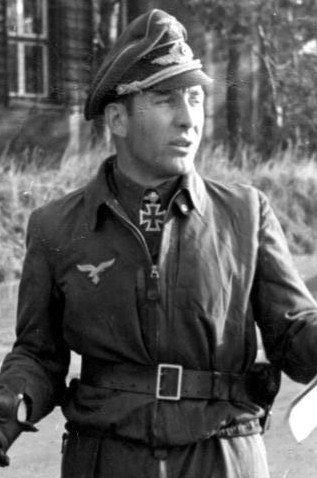
Theodor Weissenberger was a German Luftwaffe military aviator during World War II and a fighter ace credited with 208 enemy aircraft shot down in 375 combat missions. The majority of his victories were claimed near the Arctic Ocean in the northern sector of the Eastern Front, but he also claimed 33 victories over the Western Front. He claimed eight of these victories over the Western Allies while flying the Messerschmitt Me 262 jet fighter.

William Thomas Whisner Jr. was a career officer and pilot in the United States Air Force, retiring as a colonel with 30 years of military service. He was a fighter ace with Army Air Forces over Europe in World War II and a jet fighter ace with the Air Force in the Korean War.

Glenn Todd Eagleston was a career officer in the United States Air Force and the leading ace of Ninth Air Force in Europe in World War II. Eagleston was credited with 18 1/2 victories, two probable victories, and seven damaged German aircraft. He also destroyed at least five enemy aircraft on the ground, while flying P-51 Mustangs with the 354th Fighter Group.

Glenn Emile Duncan was a career officer in the United States Air Force and one of the leading aces of Eighth Air Force in World War II in Europe and the top ace of the 353rd Fighter Group. Duncan was credited with 19.5 victories, one probable victory, and seven damaged German aircraft. He also destroyed at least nine enemy aircraft on the ground, while flying P-47 Thunderbolts with the 353rd Fighter Group. He flew combat missions in the P-47 Thunderbolts and P-51 Mustangs in Europe.
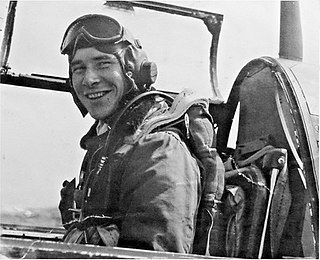
Leonard Kyle Carson Sr. was an American fighter ace and a colonel in the Air Force. During World War II, he was the highest scoring ace of 357th Fighter Group and one of the top Air Force aces of the Eighth Air Force, with 18.5 aerial victories.

Robert William Foy was a United States Army Air Forces fighter pilot and triple-ace who was credited with 15 aerial victories during World War II.

Richard Allen Peterson was a fighter ace and a major in the United States Army Air Forces. During World War II, he was the fourth highest scoring ace of 357th Fighter Group, with 15.5 aerial victories.
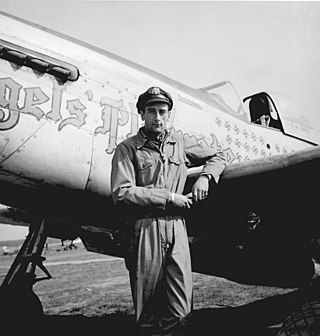
Bruce Ward Carr was a highly decorated United States Air Force colonel. During World War II, he was shot down over Germany and, after evading capture for several days, snuck into a Luftwaffe airfield and stole an enemy plane which he flew back to Allied lines. He also became a flying ace credited with 14 or 15 aerial victories, including five in a single day, for which he was awarded the Distinguished Service Cross.
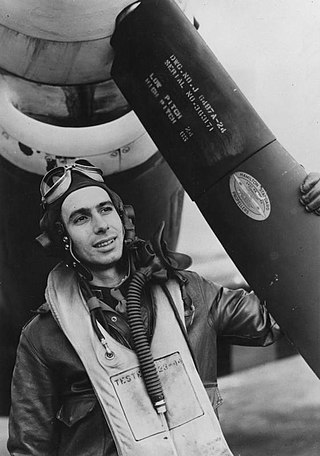
Wallace Nathan Emmer was a United States Army Air Force fighter ace who was credited with shooting down 14 aircraft during World War II. He was also one of the first pilots to fly a combat mission in the P-51 Mustang.
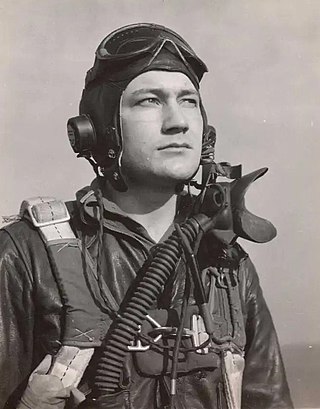
Raymond Henry Littge was an American flying ace in the 352nd Fighter Group during World War II, who was credited with 23.5 aerial victories.

Thomas Lloyd Hayes Jr. was a United States Army Air Forces flying ace during the World War II. He accrued 8.5 victories in the war.
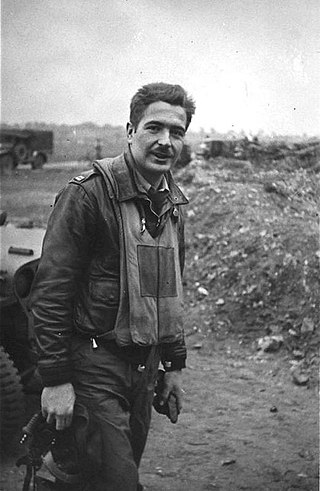
William Timothy Halton was a United States Army Air Force fighter ace in the 352nd Fighter Group who was credited with shooting down 10.5 aircraft during World War II. He was killed in action in 1952, during the Korean War.

Willard Wesley Millikan was a United States Air Force Major General and a flying ace, who was credited in destroying 13 enemy aircraft in aerial combat during World War II. He retired in 1969, after 28 years of distinguished service.

Edwin Lewis Heller was a United States Air Force lieutenant colonel and a flying ace, who was credited in destroying 5.5 enemy aircraft in aerial combat and 14 enemy aircraft on the ground during World War II. He also served in the Korean War, where he was credited in destroying 3.5 enemy aircraft before he was subsequently shot down and taken prisoner.

Claude James Crenshaw was a United States Air Force lieutenant colonel and a flying ace, who was credited in destroying seven enemy aircraft in aerial combat during World War II.

Leroy Adolph Schreiber was a fighter ace in the United States Army Air Forces. During World War II, he was credited in destroying 12 enemy airplanes, before being killed in action in April 1944.
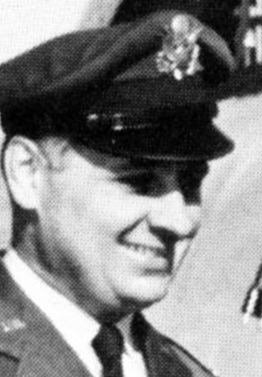
Glennon Timothy Moran was a brigadier general in the Missouri Air National Guard. During World War II, he was a flying ace credited with 13 aerial victories.






















